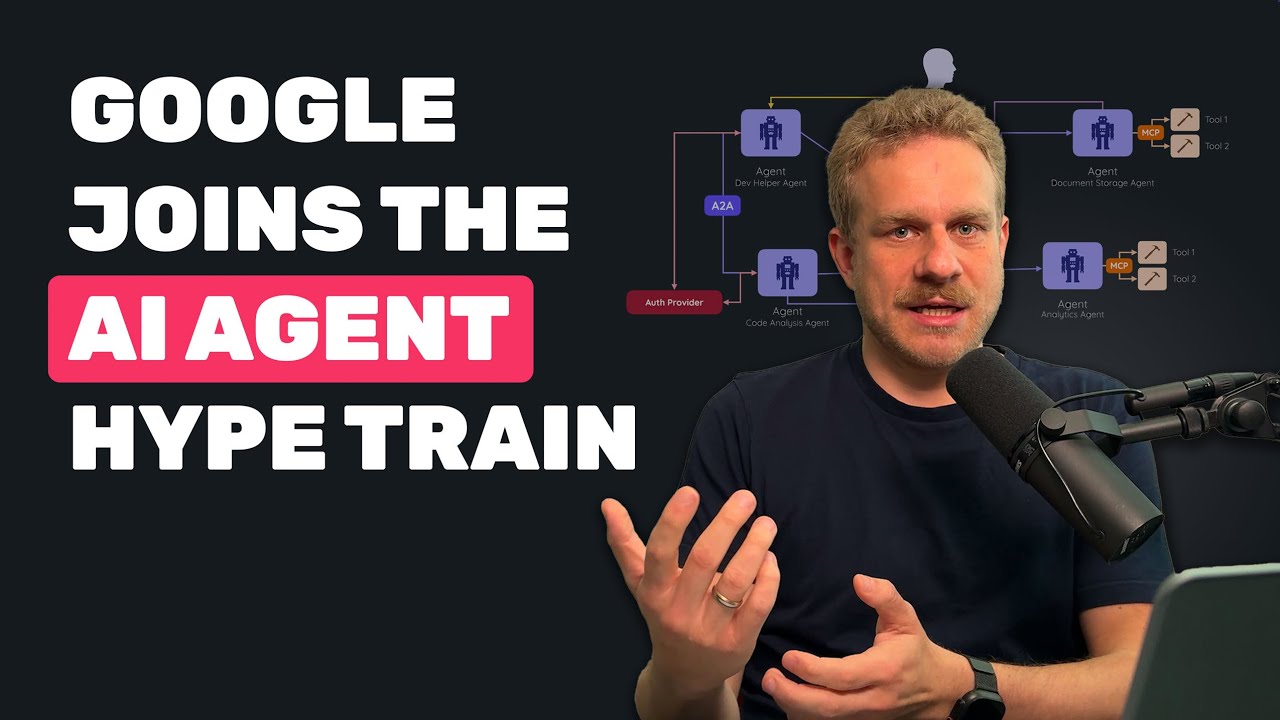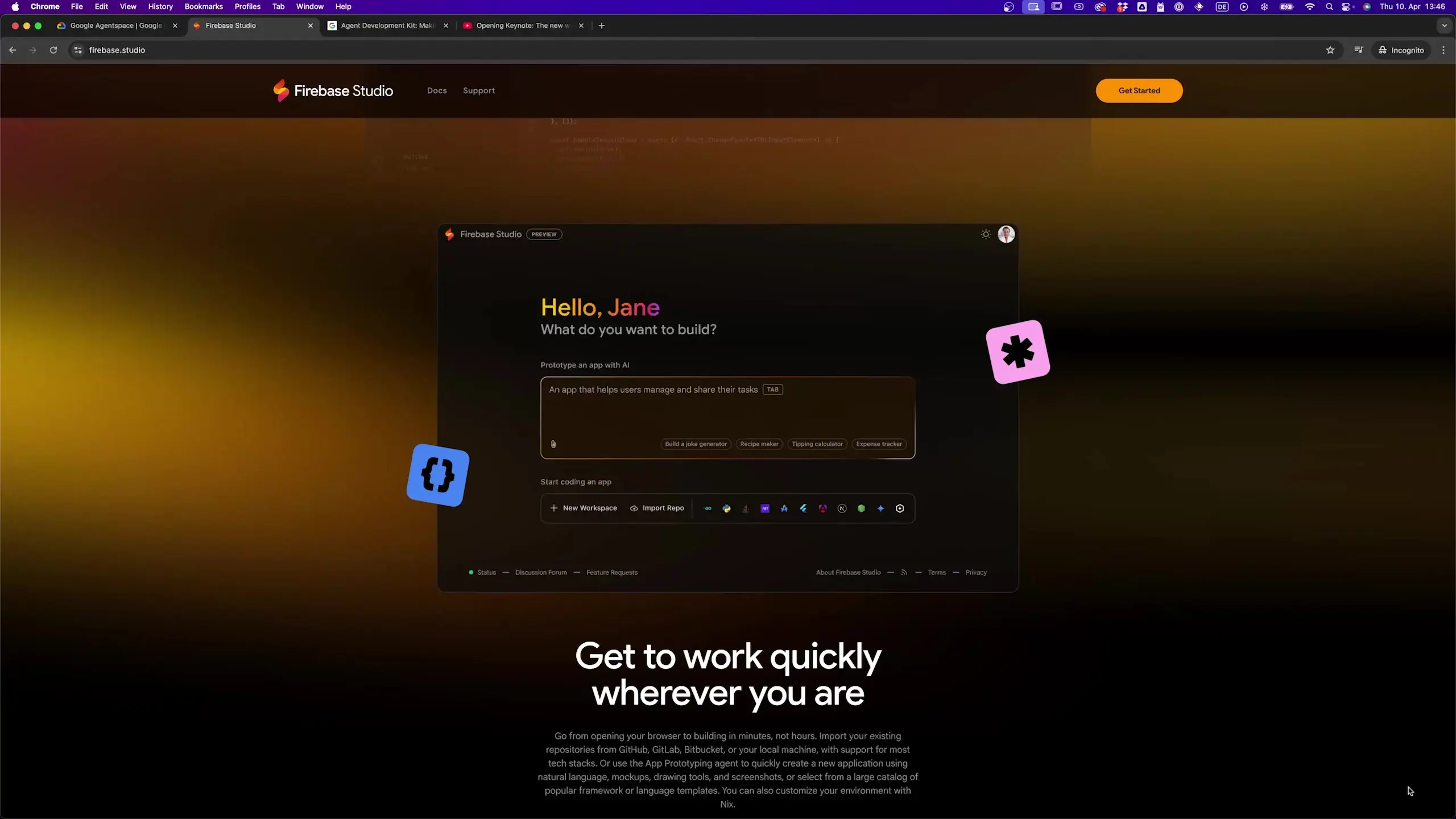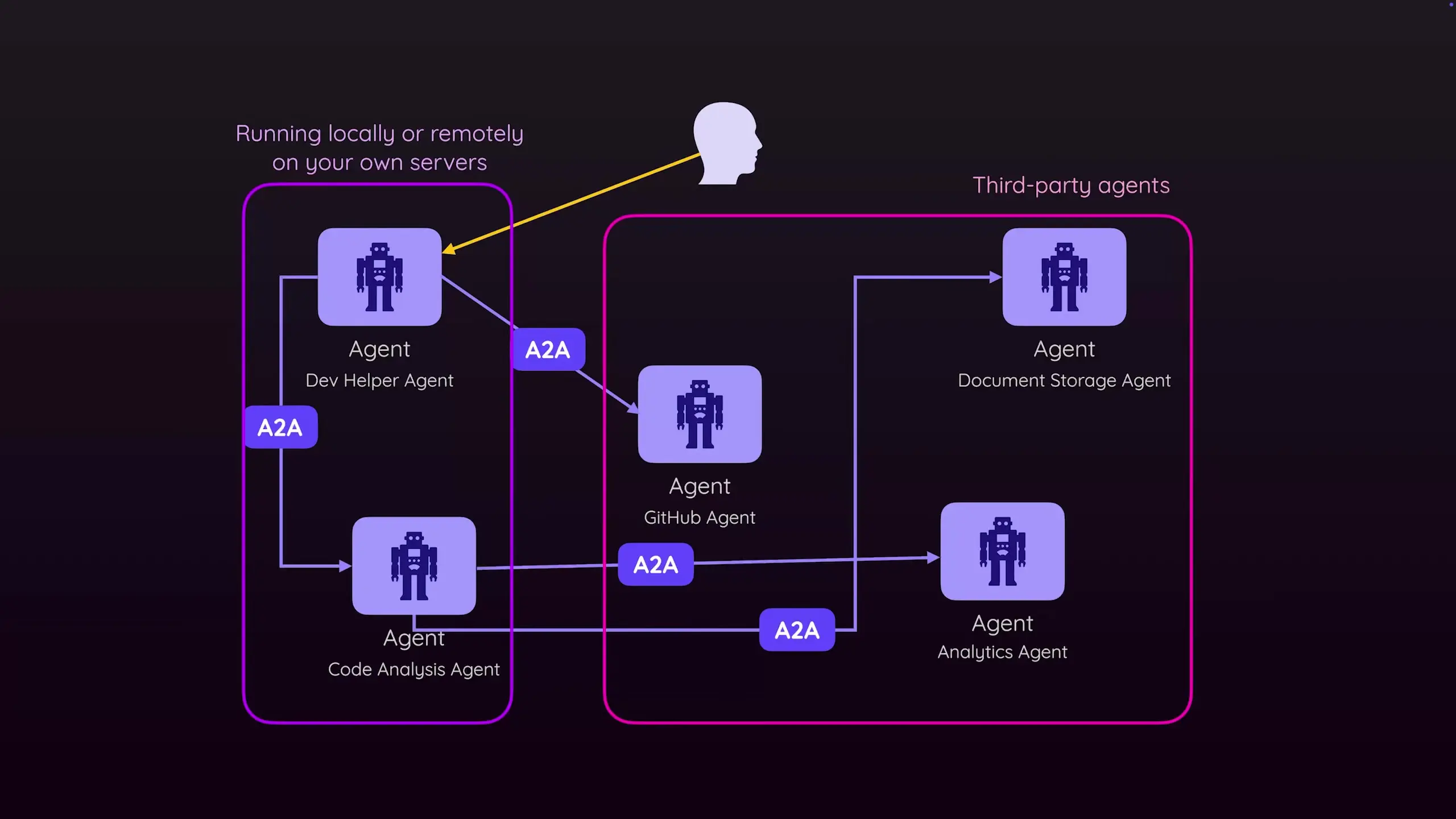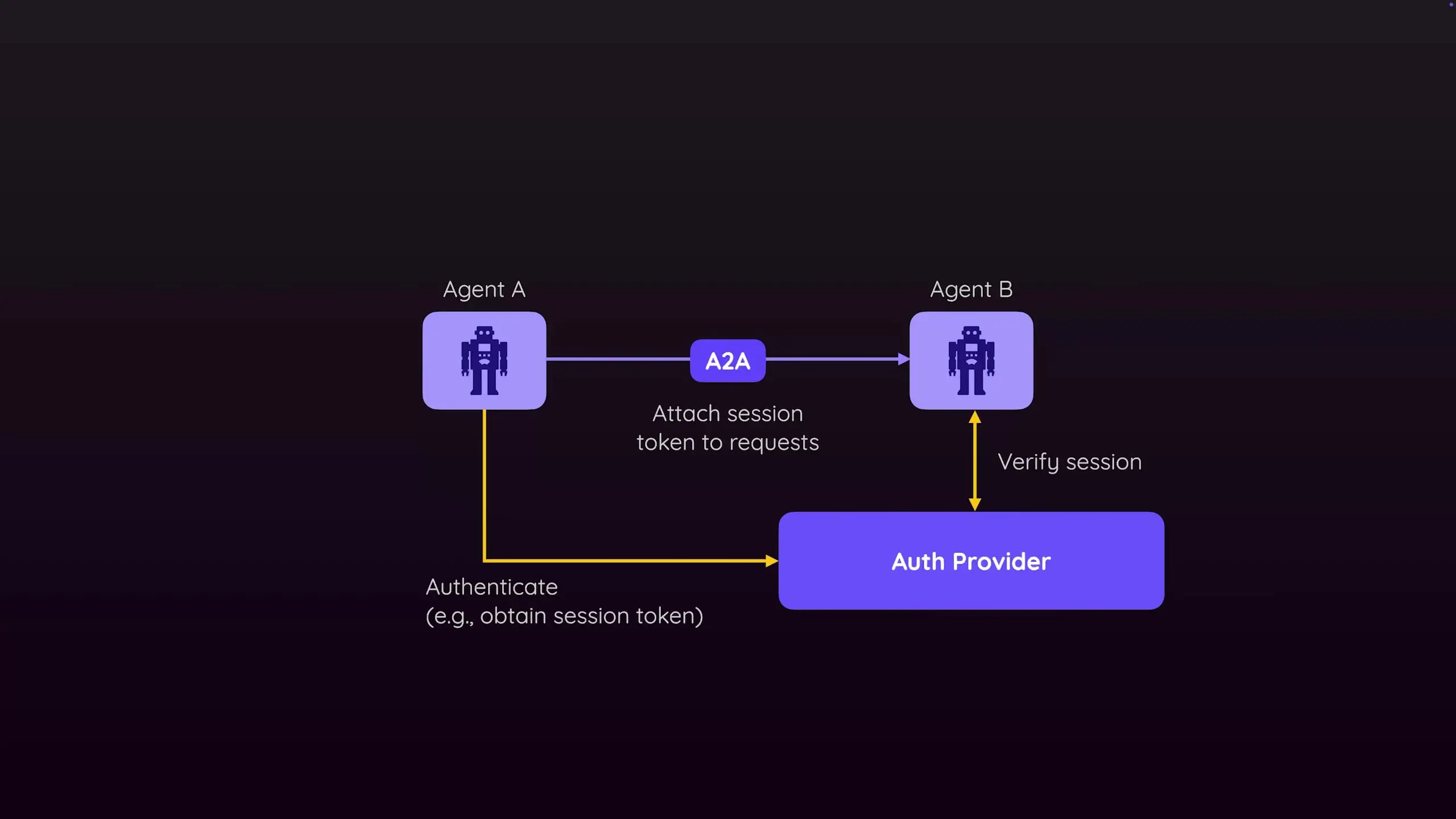
Google has made a significant move in the AI space with the announcement of several agent-related products and services, indicating their vision that 2025 will be the year of AI agents. Among these announcements, the Agent-to-Agent (A2A) protocol stands out as a particularly important development that could shape how AI systems interact in the future.
Google's New AI Agent Ecosystem
Before diving into the A2A protocol specifically, it's worth noting the suite of agent-related tools Google has introduced:
- Agent Space: A hub for enterprises to connect various data sources to different agents for AI-assisted searching and processing
- Agent Development Kit: A Python SDK for building agentic applications, positioned as an alternative to langraph and langchain
- Firebase Studio: An AI-powered web application creator that uses natural language to build applications

What Is the A2A Protocol?
The Agent-to-Agent (A2A) protocol is Google's answer to a future where multiple specialized AI agents need to communicate and collaborate. Rather than creating one monolithic agent that attempts to do everything (often poorly), the A2A protocol enables specialized agents to work together, each handling tasks they're optimized for.
The fundamental idea is similar to how we use different applications for different tasks today. Just as we might use specialized software for photo editing, document creation, and communication, we'll likely have specialized AI agents for different purposes in the future.
Why Multiple Specialized Agents Instead of One Super Agent?
- Complexity management: Different tasks require different approaches
- Security considerations: Limiting what each agent can access reduces risk
- Avoiding vendor lock-in: Using agents from different providers prevents dependency on a single ecosystem
- Model optimization: Different AI models excel at different tasks (coding, writing, data analysis, etc.)
- Fine-tuning efficiency: Specialized agents can use models fine-tuned for specific domains

How A2A Differs from the Model Context Protocol (MCP)
Google positions the A2A protocol as complementary to Anthropic's Model Context Protocol (MCP), not as a replacement. Understanding the distinction helps clarify their respective roles:
- MCP focuses on standardizing how tools are exposed to a single agent, making it easier to add capabilities to an individual agent
- A2A focuses on standardizing how independent agents communicate with each other, enabling collaboration between specialized agents
- Both can work together: An agent might use MCP to access tools directly, while using A2A to delegate tasks to other specialized agents
A practical example: Your primary agent might need to interact with GitHub. It could either use GitHub's MCP tools directly or connect to a specialized GitHub agent (via A2A) that's fine-tuned for code-related tasks and GitHub-specific operations.
The Technical Architecture of A2A
The A2A protocol includes several crucial components that enable agent-to-agent communication:
1. Agent Discoverability via Agent Cards
For agents to communicate effectively, they need to understand each other's capabilities. This is accomplished through "agent cards" - JSON documents that describe:
- The agent's capabilities and specializations
- Authentication requirements (if any)
- Available communication mechanisms (e.g., server-sent events, push notifications)
- API endpoints and interaction patterns
{
"agent": {
"name": "GitHub Assistant",
"version": "1.0",
"capabilities": ["code-review", "repository-management", "issue-tracking"],
"authentication": {
"required": true,
"type": "oauth2",
"provider": "https://github.com/login/oauth"
},
"endpoints": {
"task": "/api/v1/tasks",
"status": "/api/v1/status"
}
}
}2. Authentication Mechanisms
When one agent needs to communicate with another that requires authentication, the protocol defines how this process should work:
- The client agent reads the authentication requirements from the target agent's card
- The client agent obtains the necessary credentials (e.g., session token) from the specified provider
- The client agent includes these credentials when making requests to the target agent
- The target agent validates the credentials before processing the request

3. Task Description and Communication
Once authenticated, agents communicate by sending task descriptions. These structured requests include:
- Session IDs for tracking conversations
- Detailed descriptions of the requested task
- Any necessary context or data for completing the task
- Preferences for how the task should be handled
{
"session": "abc123",
"task": {
"type": "code-review",
"description": "Review pull request #42 for security vulnerabilities",
"context": {
"repository": "organization/project",
"pull_request": 42
},
"preferences": {
"detail_level": "high",
"focus_areas": ["security", "performance"]
}
}
}The Future of AI Agent Ecosystems
The A2A protocol represents an important step toward a future where AI agents form complex ecosystems, similar to how web services and APIs work together today. While it's too early to predict whether A2A, MCP, or some other standard will ultimately dominate, the trend toward specialized, interconnected agents seems clear.
This approach offers several advantages for developers and users:
- More powerful AI systems through specialized components
- Greater flexibility in choosing the right tools for specific tasks
- Reduced dependency on single vendors or models
- Ability to leverage domain-specific fine-tuning
- Improved security through compartmentalization
Getting Started with A2A
For developers interested in exploring Google's agent ecosystem, the Agent Development Kit (ADK) provides a Python SDK for building agents that can communicate using the A2A protocol. Combined with Agent Space for enterprise deployments, these tools offer a pathway to creating interconnected agent systems.
As we move toward 2025 and beyond, understanding protocols like A2A will likely become increasingly important for developers working in the AI space. Whether building specialized agents or creating systems that orchestrate multiple agents, the ability to leverage standardized communication protocols will be a valuable skill in the evolving AI landscape.
Let's Watch!
Google's A2A Protocol: How AI Agents Will Communicate in 2025
Ready to enhance your neural network?
Access our quantum knowledge cores and upgrade your programming abilities.
Initialize Training Sequence